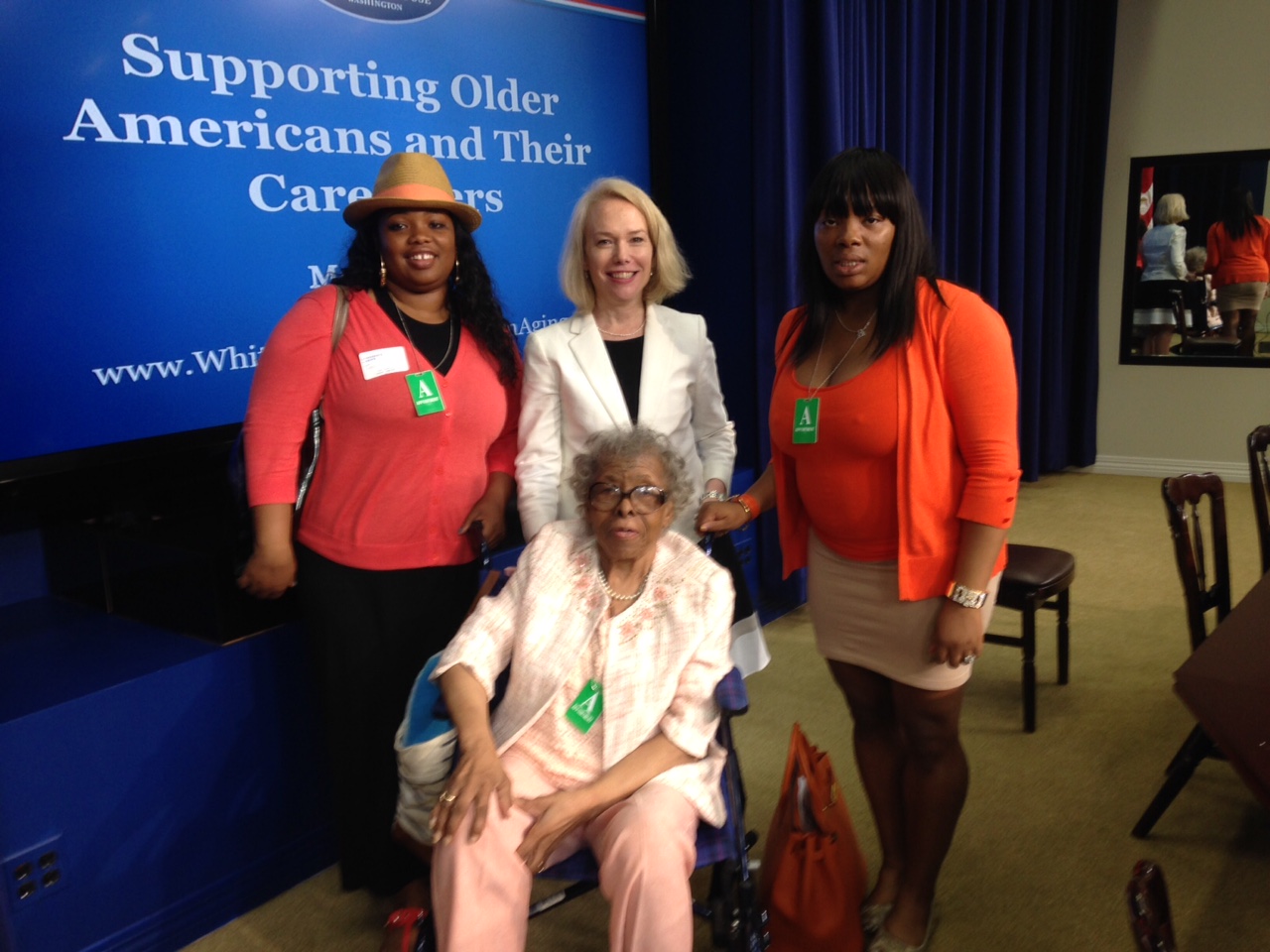We are proud to announce the launch of the CREATIVE CARE COUNCIL! LEARN MORE
We are proud to announce the launch of the CREATIVE CARE COUNCIL! LEARN MORE

By Caring Across Generations staff
Kim Thomas is a mother, a daughter, and a home care aide.
She provides around-the-clock care for aging seniors and people with disabilities, but only makes $10 to $11 an hour for the critical services she provides. On top of the low wages, Kim has to pay for her own travel costs from client to client and her own health insurance.
Because of the low wages she’s paid, Kim works up to 120 hours per week (yes, you read that right) in order to support herself and her children. “I eat while I’m driving from one case to the next, I take naps in the car,” she said of what she needs to do to make it work as a home care aide.
She shared her story on Monday, May 18th, at a summit sponsored by the White House Conference on Aging (WHCOA). Bringing together family caregivers, professional caregivers like Kim, as well as aging and caregiving advocates, the event posed this question: What can we do to support older Americans and their caregivers?
This question is becoming increasingly more urgent as we enter the Elder Boom. Every day, 10,000 Americans — our parents, our grandparents, ourselves — turn 65, and more and more of us in the coming years will need some form of caregiving assistance to live full and independent lives.
Already, there are millions of us who are either caregivers for our aging parents or other loved ones, and millions of professional caregivers — home care aides, personal care attendants, and certified nursing assistants — and this number will only grow.
That was how Cecilia Munoz, the Director of the White House Domestic Policy Council, kicked off her opening remarks at Monday’s summit. She knows this from personal experience — her sister is the caregiver, along with a team of home care aides, for her aging father.
Yet most caregivers will tell you that they don’t get the support they need, and it’s not because they don’t ask — it simply doesn’t exist.
Home care workers and other professional caregivers, much like Kim Thomas, are paid on average less than $10 an hour for the critical services they provide, so little that half are forced to rely on public assistance to care for their own families.
And few programs exist to support family caregivers, especially those who are working, who must often shoulder the financial burden of caregiving alone.
One of the panelists, Deb Rubenstein from Iona Senior Services, put it best when she said of our long-term care system: “We’re trying to piece a quilt together and we don’t have the patches we need.”
Throughout the day-long event, on panels and in breakout sessions, participants shared what public policies caregivers need — paid leave for working family caregivers, increased financial support to help with the costs of caregiving and long-term care, and higher wages and better benefits for professional caregivers.
This infrastructure and web of support — what our co-director Ai-jen Poo calls the Care Grid — is what we will need to create in order to ensure that our aging loved ones, as well as their caregivers, can thrive in the coming years.
At the final White House Conference on Aging event to take place this summer in Washington, DC, these ideas and more will be discussed.